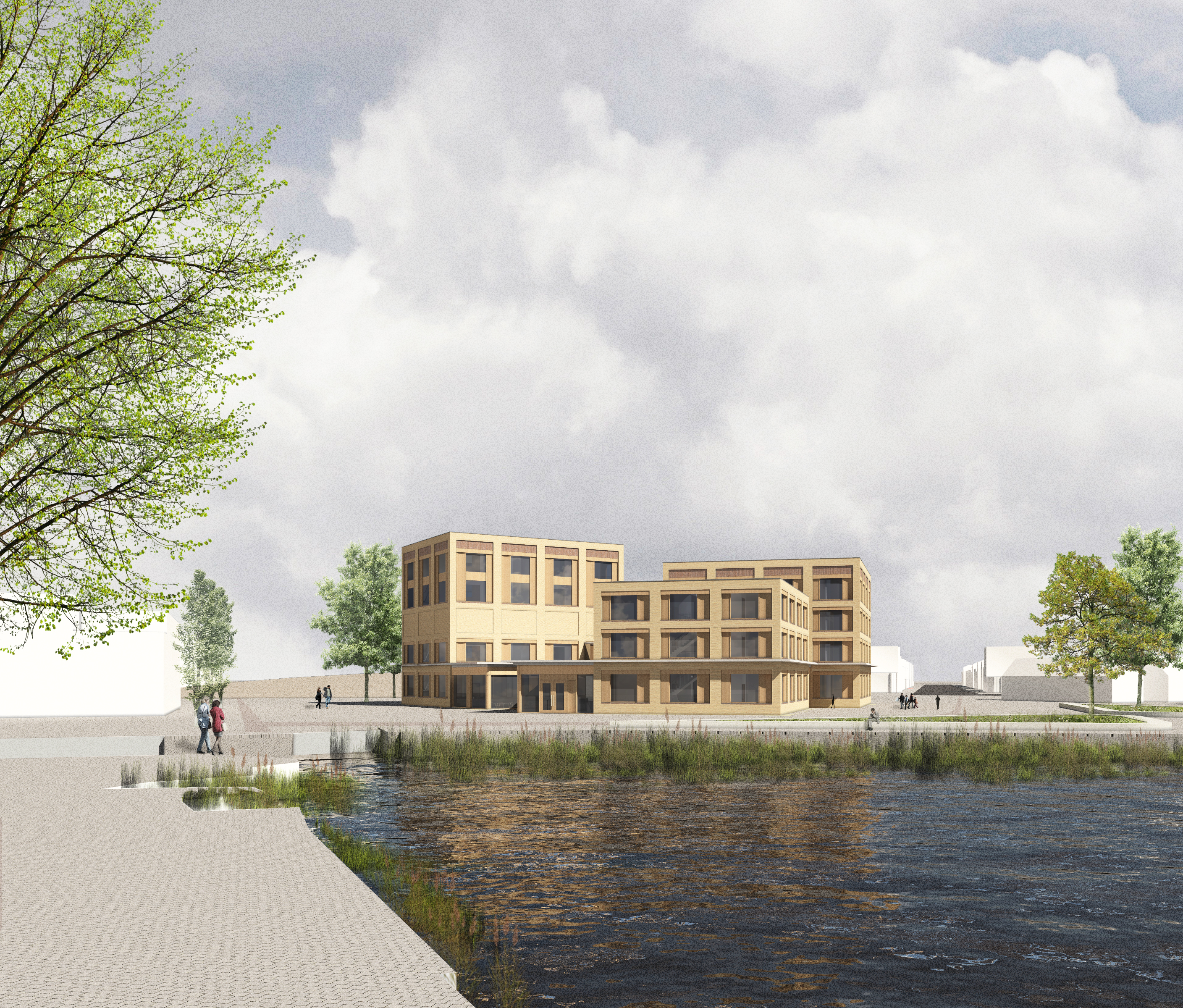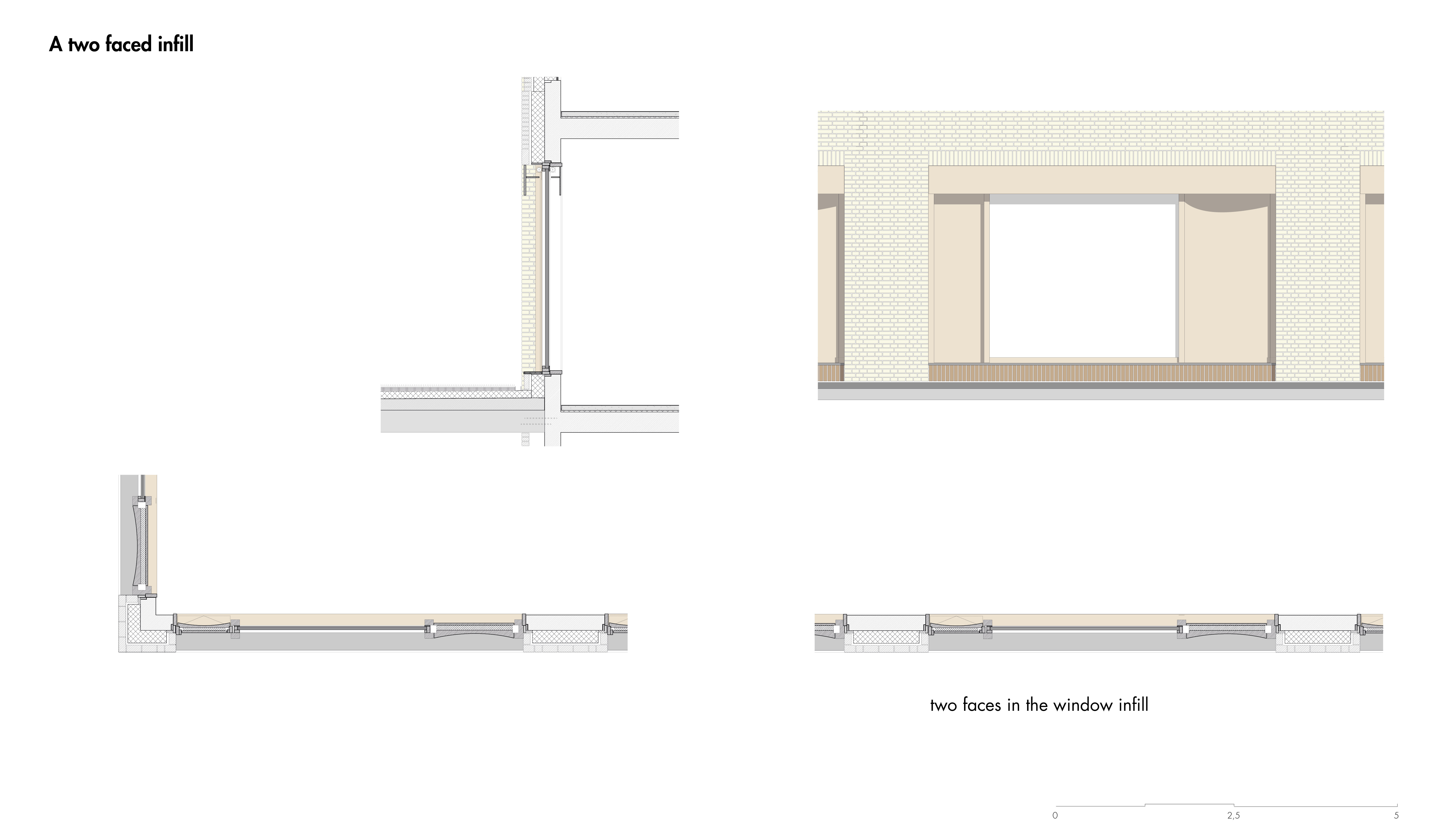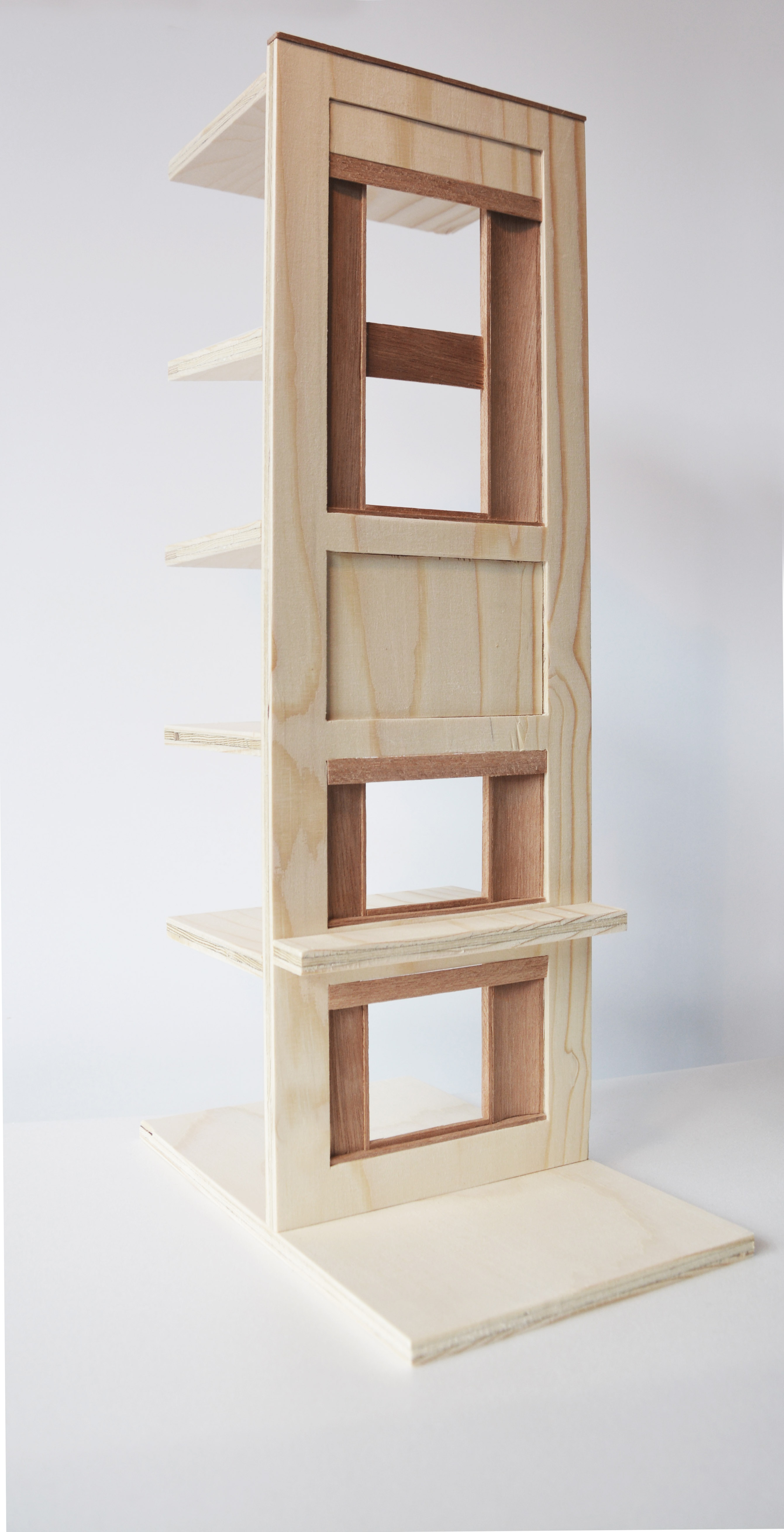LAWCOURT AMSTERDAM-NOORD
The judicial system knows certain dualities. It is on the one hand a punishing body that serves the law, but on the other hand it protects people from the power of the state. It is on the one hand very formalistic and hierarchical, but not the other hand it tries to stand firmly within society and have a humanistic approach. This duality that is inherent in the judicial system and thus the judge, is the concept for the new district courthouse in Amsterdam North.
This is translated to an ensemble of three buildings that reopens viewing axes around the building, that way connecting the surrounding neighbourhoods. The buildings itself know a formal gridded exterior facade, which is load bearing. On the interior two softer, informal forms carry the centre. In this the duality of the judicial system is brought into a duality between a formal exterior and more informal interior.
The three buildings come together by combining an interaction zone that is draped around the buildings to soften the transition between the exterior and the interior. In the central atrium the construction of this interaction zone shows how the three buildings fuse together.
The duality between formal and informal is also brought into the set up of the courtroom. Here the court table has a formal, hierarchical axis. This axis creates a more distant and traditional set up of the courtroom. But the judge can also choose for an off-centred relation to the defendant. This axis brings the actors closer and provides for a more informal and humanistic relation. With this duality in the courtroom the judge can choose itself if a case benefits from a more hierarchical approach or a more human-centred approach.
In the elevations the duality takes cues from an ancient figure: Janus. The god of transitions, doorways and duality. In the build up of the building the formal exterior and informal interior create a two facedness on in the facade. This duality of two facedness has a representation within the window infill, in which a rounded panel is counterbalanced with a straight panel. This balance is then counteracted on the interior side of the window infill. It shows how there is always two sides to the stories that come in front of the judge.
By setting up a building that engrains the duality of the judicial system from the facade to the courtroom, a courthouse is created that shows the balancing act that is omnipresent in the work of the judge. It shows how this act is in good hands within in a building that shows there is a balance in our judicial system. A balance that benefits a democracy that is guided by its constitution.
The judicial system knows certain dualities. It is on the one hand a punishing body that serves the law, but on the other hand it protects people from the power of the state. It is on the one hand very formalistic and hierarchical, but not the other hand it tries to stand firmly within society and have a humanistic approach. This duality that is inherent in the judicial system and thus the judge, is the concept for the new district courthouse in Amsterdam North.
This is translated to an ensemble of three buildings that reopens viewing axes around the building, that way connecting the surrounding neighbourhoods. The buildings itself know a formal gridded exterior facade, which is load bearing. On the interior two softer, informal forms carry the centre. In this the duality of the judicial system is brought into a duality between a formal exterior and more informal interior.
The three buildings come together by combining an interaction zone that is draped around the buildings to soften the transition between the exterior and the interior. In the central atrium the construction of this interaction zone shows how the three buildings fuse together.
The duality between formal and informal is also brought into the set up of the courtroom. Here the court table has a formal, hierarchical axis. This axis creates a more distant and traditional set up of the courtroom. But the judge can also choose for an off-centred relation to the defendant. This axis brings the actors closer and provides for a more informal and humanistic relation. With this duality in the courtroom the judge can choose itself if a case benefits from a more hierarchical approach or a more human-centred approach.
In the elevations the duality takes cues from an ancient figure: Janus. The god of transitions, doorways and duality. In the build up of the building the formal exterior and informal interior create a two facedness on in the facade. This duality of two facedness has a representation within the window infill, in which a rounded panel is counterbalanced with a straight panel. This balance is then counteracted on the interior side of the window infill. It shows how there is always two sides to the stories that come in front of the judge.
By setting up a building that engrains the duality of the judicial system from the facade to the courtroom, a courthouse is created that shows the balancing act that is omnipresent in the work of the judge. It shows how this act is in good hands within in a building that shows there is a balance in our judicial system. A balance that benefits a democracy that is guided by its constitution.






